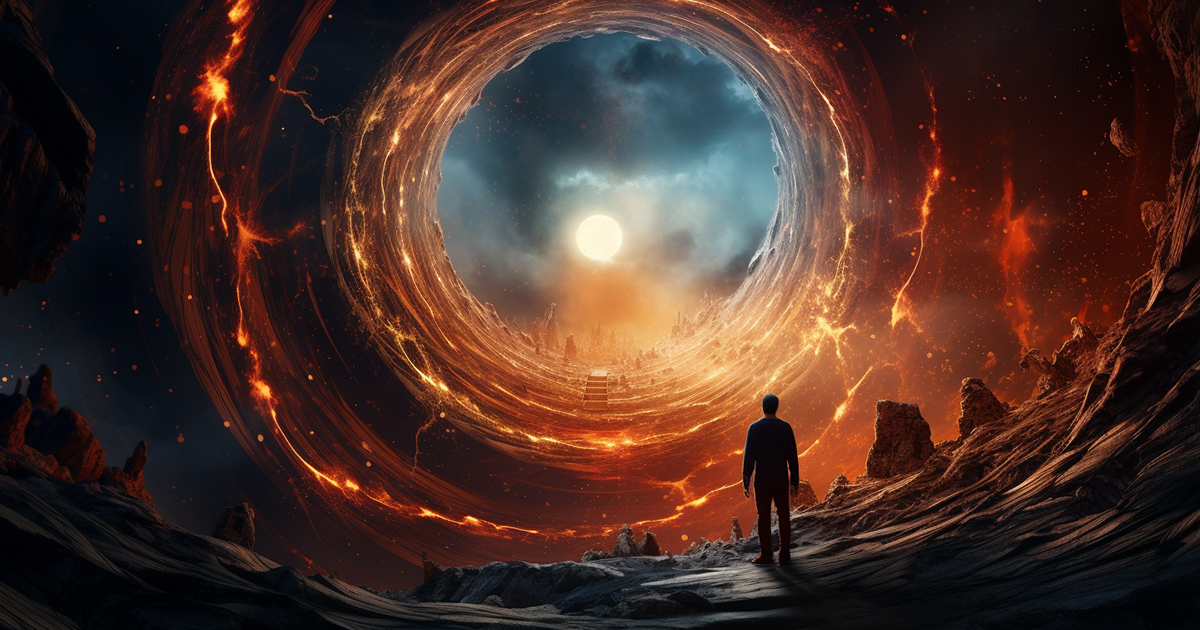Throughout the history of science, there have been pivotal moments that have fundamentally altered our perception of the universe and our place within it.
One such significant moment occurred back in July 1935 when physicists Albert Einstein and Nathan Rosen collaborated at the Institute for Advanced Study in Princeton, New Jersey, presenting a groundbreaking idea.
This concept had the power to transform our comprehension of space and time, revolving around the mysterious notion of wormholes.
Albert Einstein’s Theory of Relativity had already revolutionized our understanding of the cosmos. However, the proposal put forth by Einstein and Rosen surpassed the imaginations of their peers.
They posited that the Theory of Relativity could allow for shortcuts through the space-time continuum, creating passages known as “Einstein-Rosen bridges,” more commonly known as wormholes.

But what exactly are these wormholes, and what makes them so intriguing? Picture a piece of paper bent and punctured to connect two distant points in space. That’s the fundamental concept behind a wormhole.
If these cosmic tunnels do exist, they could potentially link far-flung regions of the universe, providing a mode of interstellar travel that has fascinated both scientists and enthusiasts of science fiction.
Contemplate the vastness of space. The closest star system to our planet is a staggering 4.2 light-years away. To illustrate, one would have to travel at the speed of light, which is an astounding 186,000 miles per second, for over four years just to reach it.
Wormholes, if feasible, might be the sole conceivable method to bridge such immense distances.
Nevertheless, there is a caveat. Creating a traversable wormhole, as per current scientific knowledge, would necessitate an astronomical amount of energy, far surpassing our technological capabilities. This is where the notion of “exotic matter” comes in.
This theoretical substance, featuring negative mass, remains enigmatic and unverified within the realm of established physics. It presents an alluring prospect but raises more inquiries than it answers.

To put the energy demand into perspective, envisage converting the complete mass of Jupiter, the largest planet in our solar system, into pure energy. The outcome would be an incomprehensible release of power, surpassing the devastating force of a nuclear explosion by millions of times. Such energy levels lie well beyond our current capabilities.
However, the universe itself may hold clues to the potential presence of wormholes. In 1991, researchers at Vanderbilt University proposed an intriguing notion: the chaos of the Big Bang, the explosive genesis of our universe, might have not only birthed the cosmos but also generated numerous tiny wormholes.
Across billions of years, these minute cosmic shortcuts could have expanded and transformed, potentially becoming traversable.
This leads to a stimulating question: Could wormholes have influenced ancient events? Some theorists speculate that if such cosmic passages existed, they could have been utilized by extraterrestrial beings to visit Earth.
Could wormholes elucidate ancient encounters with deities or extraterrestrial entities? This concept ignites the imagination and brings forth fascinating possibilities about the enigmas of our past.
To sum up, the concept of wormholes, originating from the brilliance of Einstein and Rosen, continues to enthrall scientists and enthusiasts. While the feasibility of harnessing these cosmic gateways poses a formidable challenge, the exploration of their existence pushes the boundaries of our universe’s comprehension. Wormholes stand as a testament to the enduring fascination of science and the profound mysteries that lie beyond the celestial bodies.
